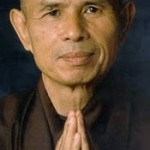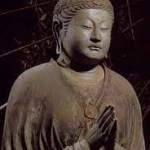Rabbi Simcha Bunim of Peshicha (1765-1827) used to say that everyone should keep a piece of paper with ”for my sake the world was created” in one pocket, and a piece of paper with ”I am but dust and ashes” in another. The Rabbi was expressing an existential truth: each individual being is important, but not self-important.

Western psychology has had precious little to say about modesty and humility. It sometimes seems these old-fashioned values have no place in today’s culture of self-promotion, entitlement, and exhibitionism. Western personality theorists reached tentative agreement in the 1980s that the ”Big Five” factors accounted for most of the variance in human personality: 1) anxiety proneness, 2) introversion-extraversion, 3) openness to experience, 4) conscientiousness, and 5) agreeableness. Modesty and humility had no place of honor within that standard model.
Canadian psychologists Kibeom Lee and Michael Ashton recently challenged the Big Five model by proposing the existence of a sixth personality factor they’ve called ”Honesty-Humility.” People with high degrees of Honesty-Humility avoid manipulating others for personal gain, feel little temptation to break rules, are uninterested in attaining wealth, and feel no sense of entitlement to elevated status or privilege. Persons with low degrees of Honesty-Humility, on the other hand, are self-important, motivated by material gain, tempted to bend rules to get ahead, and Machiavellian in their relationships with others. It’s very interesting that honesty and humility are linked together. Honesty-Humility almost sounds like the ideal Buddhist personality factor: ethics, modesty, and non-greed. It also sounds maybe a little Canadian, eh?
The Honesty-Humility factor was in the news last month with the publication of a study by Baylor University psychologists showing that job supervisors rate health care employees who score high on Honesty-Humility higher on job performance than those who score low. In fact, Honesty-Humility predicted job performance ratings better than any of the so-called Big Five Factors. Please note, however, that these employees worked in the health care field. Would Honesty-Humility also correlate with car salesmen’s job performance ratings? Maybe not.
In Asian Buddhist cultures modesty and respect for others are conveyed through the simple gesture of bowing. The hands-together bow is used throughout Asia: in Japan, China, Thailand, Viet Nam, and India.
The practice of bowing can sometimes be difficult for Westerners to fully appreciate. They often see it as a violation of the Biblical injunction against bowing down before graven images and idol worship (Exodus 20:3; Leviticus 26:1; Deuteronomy 5:7) or associate it with ”kow-towing:” acceptance of undemocratic status differentials, submission to power, and self-abasement.
These connotations may prevent Westerners from experiencing the beauty of bowing practice. Bowing is an expression of Buddhism through motion. In Zen, for example, one bows upon entering the Zendo, bows to the Buddha, bows to one’s cushion, bows to one’s teachers, and bows to one’s fellow practitioners. Zen is a bona-fide bowing bonanza. What’s the meaning of all these bows?
The word ”gasshō“ is Japanese for ”to place the two palms together.” It’s a sign of respect — but respect for what? Judeo-Christian bowing is a recognition of God’s sovereignty. Does bowing before the Buddha acknowledge the Buddha’s sovereignty? Is it an act of fealty?
Hardly. The Buddha isn’t a diety: he rules over nothing, is sovereign over nothing. Buddha images are a four-fold representation. They represent the totality of existence, our own capacity for awakening, the teachings, and the historical source of those teachings. When we bow we express gratitude for the historical Buddha as a teacher, gratitude for the teachings themselves, respect for our own capacity for awakening, and acknowledgement of the oneness of Being. The Buddha is neither separate from the totality of Being, nor from ourselves. In bowing to the Buddha we bow to ourselves-as-part-of-everything. We acknowledge the smallness of our egos, the vastness of Being, and the way of Enlightenment.
Zoketsu Norman Fisher once observed Dainin Katagiri Roshi mumbling a Japanese verse as he bowed. Katagiri Roshi translated the verse:
“Bower and what is bowed to are empty by nature. The bodies of one’s self and others are not two. I bow with all beings to attain liberation, to manifest the unsurpassed mind and return to boundless truth.”
Similarly, the Venerable Dhammananda Bhikkhuni notes:
”It is important to understand the significance of this humble gesture. When we bow down before a Buddha image it means we are able to let go of the importance of the self. We bring our head below our heart. We bow with body, heart and mind and by so doing we gain merit. When a student bows before a teacher, it is the student who gains merit because she/he is able to let go of the self; the teacher gains nothing at all.”
The practice is not a recognition of the teacher’s higher existential status or superiority. It’s a letting go of our small self and a demonstration of the appreciation and respect due all beings. The teacher returns the bow. According to Katagiri Roshi, ”bowing is mutual, just one bow, bowing back and forth.”
Respect for all beings is a core principle in Zen. It’s an expression of what Albert Schweitzer called ”reverence for life.” But it goes beyond that: we even bow to our cushion. We are grateful for, respect, and help maintain the inanimate world as well. Since everything in the universe is connected, everything is necessary for our own small individual existence. We show gratitude and respect for our cushion, the ground that supports us, the walls that protect us, the air we breathe, the water we drink, the earth, moon, and stars.
Bruce Blair, Yale’s Buddhist chaplain (and former abbot of the Kwan Um School of Zen’s New Haven Zen Center), once told me that Korean Zen Master Seung Sahn continued to bow one-hundred-and-eight times every morning even into his seventh decade. Bruce asked ”Do you want to know why one-hundred-and-eight times?” I knew ”108″ was an auspicious number in Buddhism, but was game and replied, ”Okay, why?” Bruce then told me to follow his lead. We started doing prostrations in the middle of New Haven Square, Bruce counting aloud as we did them: one… two… three… four… five…. After ten I got the idea. No logical reason. No ”meaning.” The meaning was in the performance itself. Just do it. Bruce and I smiled at each other. Direct transmission.
Bowing is good for the soul. In India they say ”namaste,” ”I bow to the divinity in you,” in accordance with the Advaita Vedanta doctrine that Ätman and Bráhman are one. In Buddhism it’s not divinity we’re acknowledging, but our capacity for awakening and the non-duality of existence. It’s a spiritual exchange in which we recognize the unique importance of each being in the universe as well as the smallness of the Self. Would Rabbi Simcha Bunim of Peshicha have understood?







Thanks, Mia. I appreciated reading your personal story on your new blog. Best wishes to you.
After living in Asia for a decade, the bowing and hand gesturing custom stuck with me. I still love it and sometimes do it reflexively in awkward situations. Something about it seems right and natural whereas I gladly gave up many customs on returning, I kept that one.
I was expecting your Honesty-Humility study to be tied in at the end of you post somehow — but alas. You know, the characterization of the trait sounds biased from the get-go. Are there many criticism of it out there already? I am suspicious.
gasshō!
Sabio – Lee and Ashton’s HEXACO six-factor solution (which includes the Honesty-Humility factor) has been replicated in studies in Croatian, Dutch, Filipino, French, German, Greek, Hungarian, Italian, Korean, Polish, and Turkish. It seems reasonably robust and replicable and makes successful predictions in a variety of domains. Every solution in Factor Analysis always has it’s critics. Time will tell…. but it’s not a flimsy fly-by-night construct.
Hey Seth
Thanks for the info. I will look into it a little more. Very Helpful.
I like the category, for I have found myself in conflict many times in my past with people who value status, privilege and wealth. But the “rule breaking” one seemed out of place. For if status quo is established by those in power, the break rules seems like a good skill even for those higher with honesty-humility. No?
I guess there are rules and there are rules.
A friend once suggested “if you break the rules for yourself, that’s psychopathy; if you do it for someone else, that’s social work.”
More seriously, if one breaks certain rules because one is trying to apply a higher standard (e.g. in Gandhian civil disobedience) there probably are tests one could apply to determine whether one’s reasons are ethically sound, or whether they’re merely self-serving. You’d have to make the case that compliance would cause more ethical harm than breaking the rule, and that whatever benefits that might accrue from breaking the rule are worth the costs with attention given to all potential stakeholders. I think if you break the rules that way you can do so with modesty and integrity. Very different from “taking shortcuts” and “cutting corners,” which is, I think, the kind of rule-breaking alluded to in the study.
Mitt Romney should have read this blog entry (and practice it!).
[bowing] Thank for the information — a lot of useful material.
At least Mitt respects the Buddha’s teaching of not killing unlike every Democrat candidate for decades. If you support the intentional killing of an emyro with a developing brain you have broken the first precept and can’t truly take refuge in the Dhamma or the Buddha. Your practice is just a vanity that just sooths your troubled troubled heart through detatchment.
That isn’t release from dukkha, that is burying your head in it.
Great article. I found it by looking for “being humble buddhism” on Google.
I remember the first years when I attended retreats (and didn’t bother learning about the Buddhist philosophy) I did not bow at all. I thought I don’t need to bow before anything. I.. I…. I….. 🙂
I also think that the gesture itself is beautiful. In bowing you make yourself vulnerable to attack on a very primitive level. You are also small, very small and being reminded of that is refreshing. It is a reminder to not take yourself too seriously. We are just a small part of the whole.
Welcome, Jay! Glad you liked it.